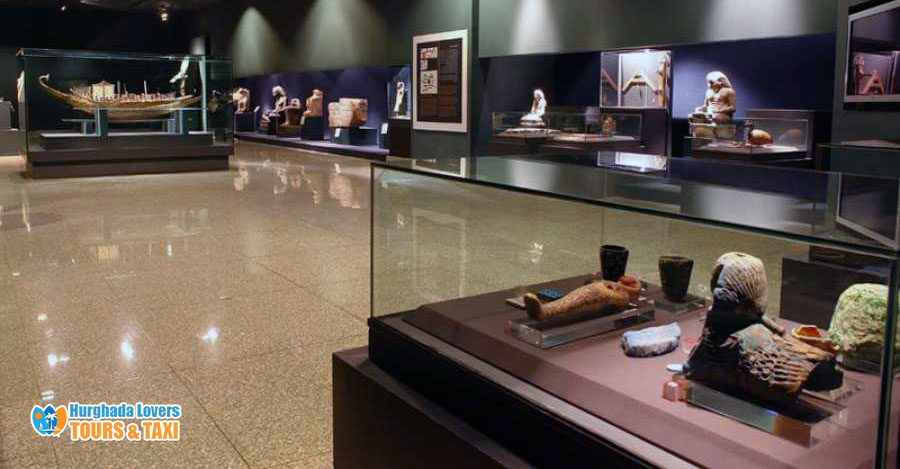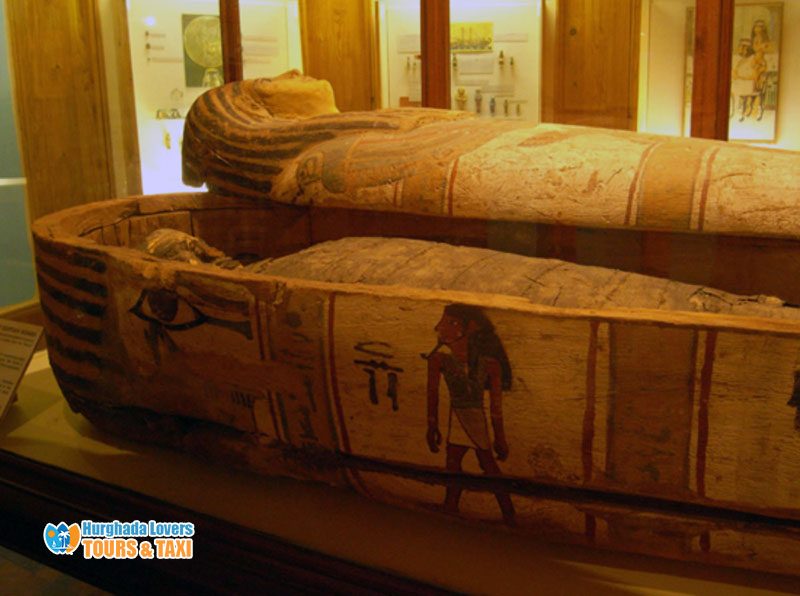Mummification Museum Luxor Egypt | Best Things to Do in Luxor
discover the Secrets of Mummification among the Pharaohs in Ancient Egypt, plan of the most important pharaonic archaeological Museums of Egypt in Luxor to show the History Of Egyptian & Mummification among the ancient Egyptians, what tools were used, how the burial of the dead was carried out, what are the prices of entrance tickets, visit dates and more to start your sightseeing trip & Things to Do in Egypt.
Hurghada lovers Offer Luxury Hurghada to Luxor Tours | El Gouna to Luxor Tours | Makadi bay to Luxor Tours | Sahl Hasheesh to Luxor Tours | Soma bay to Luxor Tours.
Facts about the Mummification Museum Luxor Egypt:
- The museum opened in 1997 under President Mohamed Hosni Mubarak.
- The embalming materials used by the ancient Egyptians in the mummification of the deceased are on display in this museum.
- The museum features a rare collection of pharaonic mummies and animal mummies discovered in the pharaonic tombs of Luxor, such as cats, crocodiles, and fish.
- In the Mummification Museum in Luxor, you will see special rooms to display pharaonic coffins and a collection of funerary paintings and icons buried with the mummy in the coffin.
- Museum area = 2035 square meters.
- The museum contains more than 150 pieces describing the procedures of mummification in the Pharaonic civilization.
How important is the Mummification Museum?
The museum presents the secrets of the mummification procedures that the ancient Egyptians performed before the burial of the deceased, where it exhibits the tools used by mummifiers and a collection of mummies of pharaohs and animals.
Interior plan of the Mummification Museum:
First floor: The exhibition hall:
You’ll see a long, slightly descending corridor containing paintings dating back to 1,200 BC, explaining the steps and rituals taken by the ancient Egyptians to bury the mummy in the funerary procession and the mummification stages until the final stage of burial in the cemetery.
The paintings are like those of Hu-Nefer and Ani, which are currently on display at the British Museum in England.
When you finish the hallway, you will see a small room with 19 glass windows containing 60 rare pieces.
The museum also has a conference room, a cafeteria for a break and a private video room.
The main sections of the museum:
- A special section to display ancient Egyptian gods and religious beliefs.
- Section displaying the materials used in the body embalming agent.
- Old embalming fluids and organic matters used.
- The statue of Ushabti, which is placed with the mummy in the coffin.
- The amulets of the pharaohs that were placed in the coffin.
- Exhibition section of animal mummies such as cats and crocodiles.
What are the most important embalming tools on display in the museum?
- The pharaonic embalming bed that was used to lay on top the mummy of the deceased.
- Ezbel, a special medical tool to break the brain cells of the deceased human being.
- The spatula which is a medical spoon for the internal cleansing of the intestines of the deceased.
- The moose to make an opening on the left side of the abdomen.
- Tweezers and scissors used in medical autopsies in the past.
- Scalpel to separate and remove the viscera of the deceased body.
- Butterfly for internal dry cleaning of the body after the end of the removal of human organs.
- The tool of the drug to restore bones if necessary.
- The needle for sewing the skin of the abdomen after it is finished from the stage of complete emptying of the intestines.
- Natron salt and sawdust, which were used in the pharaonic embalming processes of the mummy as temporary padding in the chest and abdominal cavity.
- Scented grease residues and resin residues on the linen coils that were used to be placed in the coffin after the mummy was placed.
What are the animal mummies on display at the Mummification Museum?
- The mummy of an ibis.
- The mummy of a monkey.
- A duck mummy from the time of the New Kingdom.
- The mummy of a small crocodile.
- Une mummy of a bagrus.
- A cat mummy.
The most important pieces & Pharaonic Monuments exhibited in the museum:
- Ankh is the symbol of life of the pharaohs.
- You will see a small model of a special funerary boat to transport the coffin of the deceased across the Nile.
- A statue of the ancient Egyptian goddess Nephtis and the goddess Isis, the goddess of protection of the deceased in his second life after death.
- A ram covered with a golden mask in Cartonnage.
- The coffin of Paddy Amon.
- The mummy of the son of King Pinedjem I “Egyptian Pharaohs kings“, famous for the mummy of Massaherta, is considered the only mummy to be exhibited at the Mummification Museum in Luxor.
Where is the Mummification Museum Luxor located?
Corniche of the Nile, Luxor, Egypt.
Dates of visit of the Mummification Museum Luxor:
Sunday: 09h00 to 14h00 – 17h00 to 21h00
Monday: 09 :00 to 14:00 – 17:00 to 21:00
Tuesday 09:00 to 14:00 – 17:00 to 21:00
Wednesday: 09 :00 to 14:00 – 17:00 to 21:00
Thursday: 09 :00 to 14:00 – 17:00 to 21:00
Friday: 09 :00 to 14:00 – 17:00 to 21:00
Saturday 09:00 to 14:00 – 17:00 to 21:00
Entrance ticket prices to the Mummification Museum Luxor:
The ticket price of a foreign tourist = 100 Egyptian pounds.
The ticket price of a foreign student = 50 Egyptian pounds.
The price of an Egyptian ticket = 20 Egyptian pounds.
The price of an Egyptian student’s ticket = 5 Egyptian pounds.
Author & Writer Mummification Museum Luxor: Tamer Ahmed Abd elfatah Yousif
The main sections of the Mummification Museum Luxor


